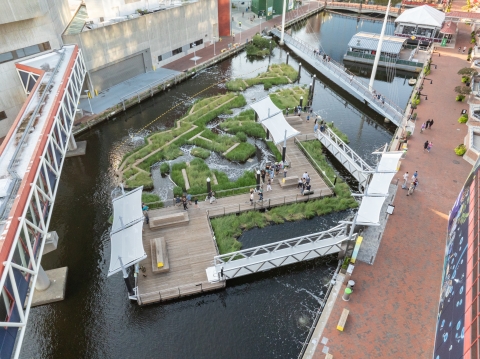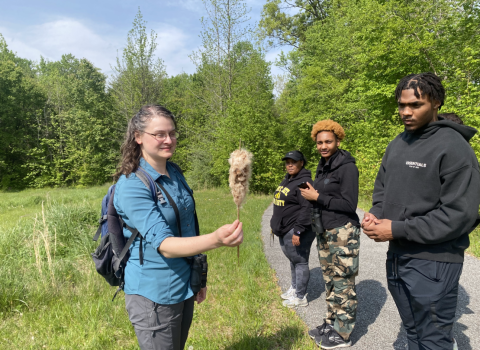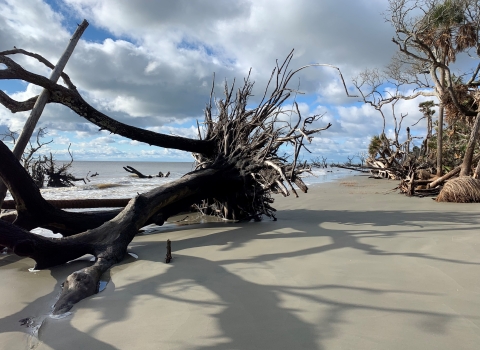Since opening in August of 1981, the National Aquarium has taken on many roles within the Baltimore community.
For the more than 750 species of marine and non-marine species who call the aquarium home, it serves as a sanctuary and an engine for conservation – for people and animals alike.
For the more than 1.2 million annual visitors, whose admissions ticket purchases help keep the facilities running, the aquarium is a source of wonder and discovery — an immersive, educational experience replete with interactive exhibits, artistically designed displays and a tropical rain forest on the top floor.
The National Aquarium also serves as a hub for community engagement and acts as a collaborator rooted firmly within Baltimore’s network of businesses, nonprofits, and institutions.
Now, the aquarium is expanding its community engagement role to making the Inner Harbor more accessible and generate more opportunities for community members to connect with natural resources.
In 2023, the National Aquarium mapped out a multifaceted community engagement proposal with funding from a Chesapeake Watershed Investments for Landscape Defense (WILD) grant and support from partner organizations around Baltimore, including Maryland Department of Transportation, Maryland Port Administration and Greater Baltimore Wilderness Coalition.
The goal of this collaborative effort is to invest in longstanding relationships within the community to increase native tree supplies, improve habitat connectivity for imperiled species in the Chesapeake Bay, and bring more community engagement into the inner harbor through field trips, volunteer seed collection, and habitat restoration opportunities that connect to ongoing initiatives in the state of Maryland.
“There is a lot of overlap between our organizations, and we wanted to leverage our connections instead of working in silos,” said Charmaine Dahlenburg, Director of Field Conservation at the Aquarium, reflecting on the collaboration-driven proposal.
Leveraging connections across such a wide range of partners and with a pool of funding from different sources has generated a series of projects that touch on a variety of conservation and community engagement goals. According to Dahlenburg, this community-based approach allows the aquarium to honor its commitment to local investment.
“We really focus on Baltimore City, and Baltimore youth in particular,” she said “We have staff trained in education. We already have a strong presence in South Baltimore as a stakeholder within Masonville Cove, Urban Wildlife Refuge Partnership. People can visit to engage in environmental education and action, or to just connect with nature”
Of these many projects, perhaps the most notable will be the National Aquarium’s Harbor Wetland, aimed at reintroducing tidal marsh habitat to Baltimore City. The 8,000-square-foot floating wetland, featuring a live oyster reef, to promote habitat connectivity and public access opened in August 2024.
This wetland campus offers visitors and residents of the area a direct line of access to the inner harbor a space made inaccessibly due to industry and pollution for many years, Dahlenburg reflected on the hopefulness this project brings: “For me, seeing Harbor Wetland opened for the first time in Baltimore City is a big deal. I really think we will be surprised to see some animals we haven’t seen in a long time.... One day we’ll get to a point where the Harbor is fishable ”
In addition to Harbor Wetland, the aquarium will use WILD funding to engage community members in public bioblitzes, community workshops focused on environmental education at Masonville Cove,Hart-Miller Island, and Cox Creek for Baltimore youth.
Finally, to support an ongoing statewide habitat restoration effort in Maryland called the 5 Million Trees Initiative, the National Aquarium and its partners will use Chesapeake WILD funding to establish a local hub to train volunteers for hands-on conservation efforts, including native seed collection, tree grow out, and wetland planting.
With such a variety of projects and goals underway, the National Aquarium’s paving a path toward a bright future.






